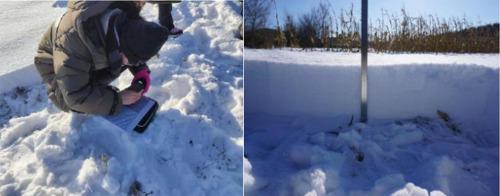Science of the Total Environment ( IF 9.8 ) Pub Date : 2021-09-16 , DOI: 10.1016/j.scitotenv.2021.150397 Fan Zhang 1 , Lijuan Zhang 2 , Mingxi Pan 3 , Xinyue Zhong 4 , Enbo Zhao 2 , Yifeng Wang 2 , Chen Du 2

|
Light-absorbing impurities (LAIs), including black carbon (BC) and mineral dust (MD), in snow cover reduce snow albedo and accelerate the snow melting rate, thus influencing the regional water resources, ecological environmental security, and climate change. There is still a lack of quantitative assessments of the impacts of BC and MD on snowmelt in urban areas. This study was conducted from December 2018 to March 2019. A total of 120 snow samples were collected in Harbin, Northeast China to quantitatively assess the concentration characteristics of BC and MD in snow cover in different urban polluted areas and the impacts on snow albedo, radiative forcing, and snow melting. Average concentrations of BC and MD in snow cover in Harbin were 126,121.03 ng g−1 and 1419.6 μg g−1, respectively. Average concentrations of BC and MD in the industrial area were the highest, which were 4.06 and 3.13 times higher, respectively, than those in the suburban area. BC or MD decreased the average snow albedo by 0.3677 (58.49%) and 0.0583 (18.18%) with radiative forcing of 44.94 W m−2 and 7.58 W m−2, respectively. BC and MD in the industrial area, residential area, and suburban area decreased the average albedo by 0.449 (59.55%), 0.3758 (45.86%), and 0.2959 (37.65%), respectively. The impacts on snow melting time in Harbin were mainly attributed to BC, which advanced snow melting by 7.9 ± 1.16 d, while MD advanced snow melting by 3.7 ± 0.9 d. Under the combined effect of BC and MD, the industrial area, residential area, and suburban area in the city experienced advanced snow melting by 9.66 ± 0.38 d, 7.97 ± 0.31 d, and 6.67 ± 0.65 d, respectively. The results can be used to assess the contribution of intense human disturbance to snow melting.



























 京公网安备 11010802027423号
京公网安备 11010802027423号